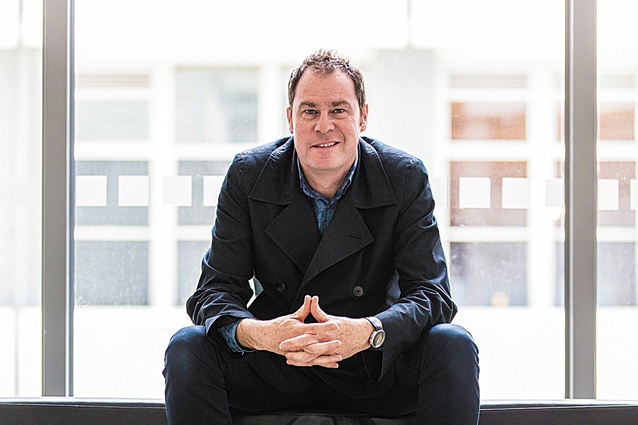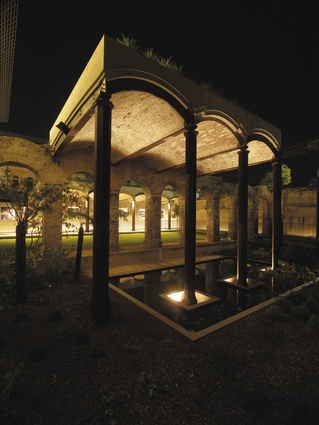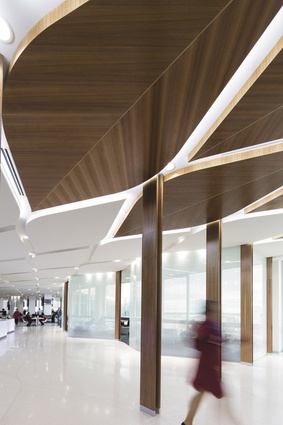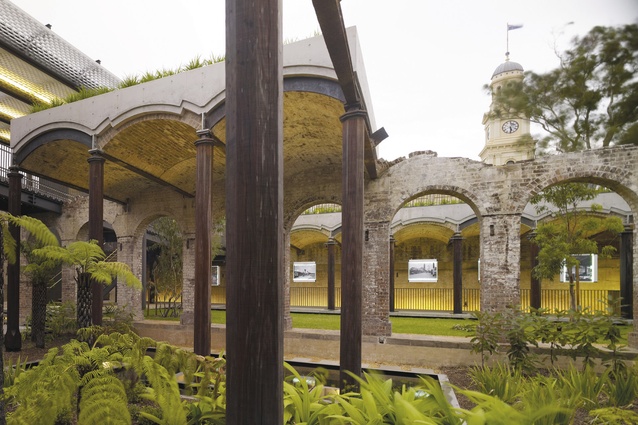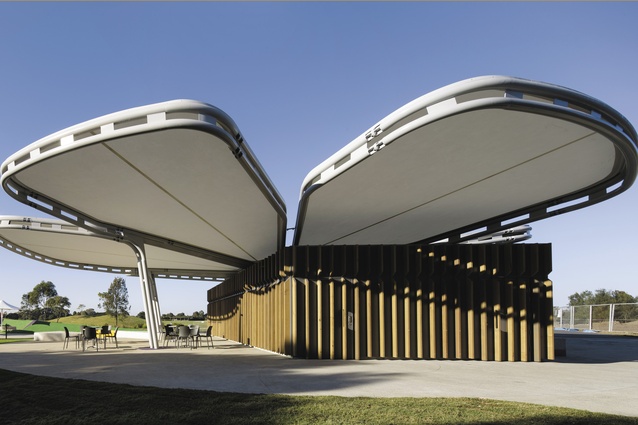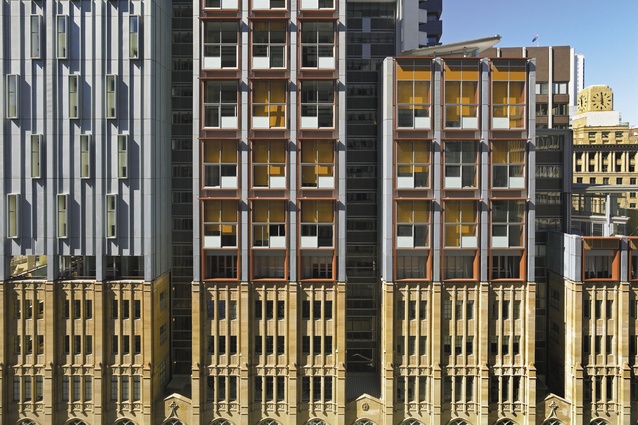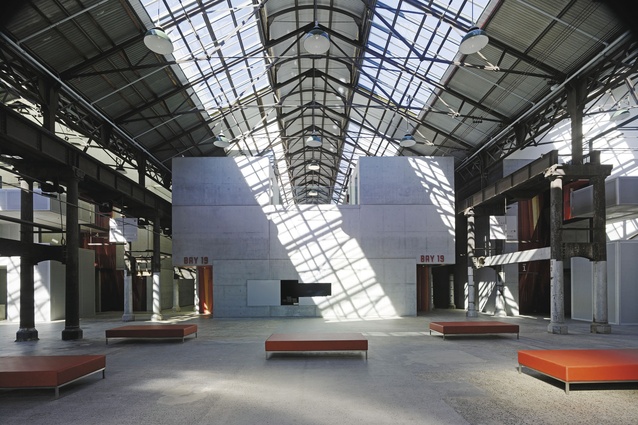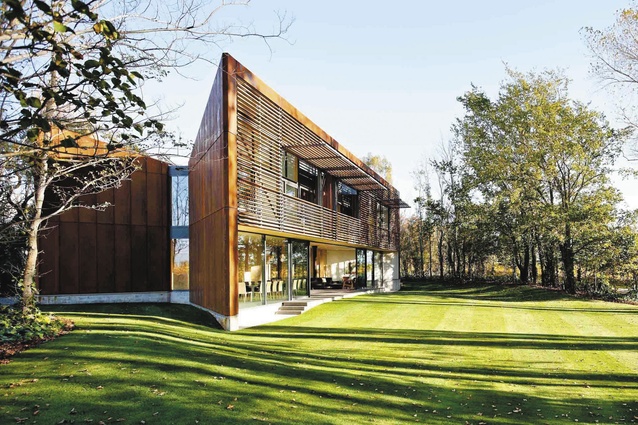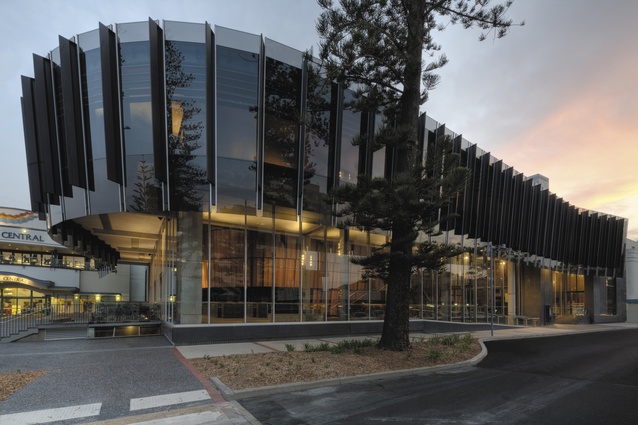With Tim Greer
Architecture NZ editor Justine Harvey talks to Christchurch-raised Tim Greer who has carved out a successful career in Sydney with Tonkin Zulaikha Greer Architects.
You’ve had a successful career in Australia with Tonkin Zulaikha Greer Architects (TZG) but I understand that you’re from Christchurch; what was it like growing up in New Zealand?
I grew up in New Zealand and loved my life here. I started working in Sydney and found it an incredibly optimistic and inspiring city back in the ’80s. It seemed like a perfect place to be because it had amazing civic architectural aspirations, that didn’t seem to be fully realised. I’d lived in lots of cities and spent a couple of years travelling the world and it just seemed like an exciting place to be. There was no grand plan; it just grew on me and stuck. It also helped that Australia is so close to New Zealand and I do come here a lot: two of three times a year at least. I’ve just done a little building in New Zealand with one of my friends.
Which one is that, then?
The new guest house at Cloudy Bay vineyard in Marlborough.
Oh yes, that project’s stunning, we (AGM) recently published a feature about that in Urbis (Issue 70).
So that was done with Paul Rolfe who used to work with me at TZG in Sydney and then he moved with his family back here to Wellington. Working together on that was really rewarding… And I’ve been working on a couple of projects in Queenstown for a while, which bit the dust during the recession but I really hope that they will come back.
What about your upbringing? What made you interested in architecture?
Well, just growing up in Christchurch and being acutely aware of what Miles Warren and Peter Beaven were doing: my mother always knew their next buildings, so I’d go and have a look at them on my bicycle. I was probably, unbeknown to them, their number-one fan; visiting all the buildings being built was very interesting in the late ’70s/ early ’80s and those guys were in their zenith. They were always in the paper – slagging off one another, trying to outdo each other and building incredibly different kinds of architecture. Peter Beaven’s was colonial romanticism and then Warren with his brutalistic classicism. What was so stunning about the buildings was that it was descended from brutalism but it was petite brutalism because of the size of the city, the buildings were small. It’s not being parochial but I do think it’s some of the best brutalism around because of its scale. I grew up in a lot of those buildings.
Well, brutalism done well is amazing because it’s so sculptural and interesting: the social ethos behind it…
Like the Smithson buildings. One of the interesting things about TZG is that we all have (and we have only found this out quite recently) an absolute fascination with brutalism.
(I’ve just commissioned a couple of pieces on brutalism for our May/June issue of Architecture NZ.)
We’ve all come at it in very different ways. There is a lot of bad stuff but there is a lot of bad stuff in any kind of architectural philosophy.
Well, less ‘bad’ than in postmodernism.
Absolutely: it had a longer gestation and that gestation actually came through some very socialistically minded architects. That’s the incredibly sad thing about Christchurch; some of those buildings are going to go and you can’t justify rebuilding them but they were really brilliant pieces: and not just the civic buildings that Warren did, in particular, but the commercial buildings, the little office buildings.
Are there any buildings that you’re particularly sad to see go?
Well, I’m not sure what’s happening with Christchurch College (now College House) at The University of Canterbury; I don’t know if that will be rebuilt but it was a stunning building. I understand that the (Harewood) Crematorium is okay… and hopefully they can keep the Town Hall although, in some ways, the Town Hall was at the end of that period. When you go through Warren’s early buildings, they were just stunning: the Student Union Building at The University of Canterbury was one of those buildings, and the early Student Union Building at The University of Auckland. Not wanting to be nostalgic or romantic about it, but they were particularly fine bits of architecture and they were also very interesting for somebody trying to understand what architecture is because they look constructed. The architectural articulation came through; they actually take you through the logic of construction, so you can work out how everything comes together. It was very easy, whereas, today, everything is surface; you don’t see how anything is held together but, on those buildings, the structure was expressed – everything was expressed.
Much like high-tech architecture, in that sense – the same principle.
Completely. That’s an interesting connection because the Rogers/Foster high-tech is partially descended from, obviously, the industrial revolution, English engineering and then brutalism and all of those things come together into their work.
What drew you to Sydney?
I think that what really drew me to Sydney was the urbanity… I don’t actually see buildings as entities in their own right; they’re part of a greater system. So, whether that’s a moment in time or an urban setting or a landscape setting or just a social network… the building is part of the city. It’s not that idea of a free-standing building; all the negatives that go with that can actually be attributed to the fact that they were not connected into their context in a way. When I think back to New Zealand, to my happy and guided childhood, I always have – and I’ve only been able to put my finger on it quite recently – this sort of absence and it operates on a number of levels. Growing up in a colonial city like Christchurch on the Canterbury Plains in this sort of alluvial slope, effectively a wasteland off the mountains, but living in this gridded city, you can see that the grid is a way of representing the potential of a city but the city hadn’t developed enough to fulfil the potential. So there were always these vacant corner sites because there wasn’t the density to maintain development or, at The University of Canterbury, there is a car park where, in 20 years’ time, there will be a building but that building wasn’t there when I was studying. So, at an urban level, there was always this sense of incompleteness. And then I was completely drawn to Colin McCahon as a painter and, I couldn’t understand why, but he was thinking about the condition of absence and you go to the landscape and there it is. I think I was yearning for this kind of urban existence and I don’t quite know why…
Many New Zealanders, certainly in this profession, may have that sense. I grew up in a tiny town and had the sense that I needed to move away.
It’s funny because, when people talk about congestion and the negative aspects of cities, I just think, “Wow, it’s wonderful”.
Well, cities are exciting places: there are so many things going on. We’re social creatures after all. The thing I loved about living in London was having all your amenities close by and being able to travel to places easily by public transport. I get frustrated by Auckland: that it’s such a small place really and, yet, it can be so hard to get to places except by car. Although, in Auckland, we’re also privileged that we can have a bit of space as well, and probably Sydney’s like that to a certain extent, in comparison to other large cities around the world.
In Sydney it’s easier not to have a lot of space because you have to be wealthy to have a lot of space or you have to live out of the centre. I love the thought of the city, that some parts thrive and some parts die, others seed and others regenerate and, you think, what is this regenerative process? That’s fertile ground for architects and our architecture is very much based in the philosophy of the regenerative form. We do a lot of free-standing new buildings but, at the heart, we think about the connections around them.
So, you, Brian (Zulaikha) and Peter (Tonkin), how did you meet up? I know you started your training at The University of Auckland.
Yes, then I went to Sydney in ’88 and had interviews with quite a few firms and was quite taken with Brian and Peter – two inspiring individuals – and so I started working with them and later they offered me a share of the business. We’re 10 years apart, so we’re different generations with different interests but we are bound by a philosophical approach. We run our own projects but our core philosophy comes out: we’re just thinking on the same wavelength on so many different levels, not just architecturally.
Do you have design team meetings where you thrash things out?
We always talk about things; we hold lunchtime meetings three times a week, where we talk about all of our projects and what’s happening… I guess we share an ideology and our working methods are really similar. We spend a lot of time extracting information from our clients and the sites so, if you’re the director who’s extracted the information, then it’s quite difficult for the other directors to get involved sometimes. But we always fall back to each other and talk about that and we build close relationships with the clients because of it. And we would never go off and do some bizarre piece of geometry that the other directors didn’t like or try to persuade the other directors to do that. Although, I do find it fascinating to see projects taken in a direction you wouldn’t go yourself – it’s fascinating to watch. It’s interesting, if you look at an office as a diagram, the process is important and, in some ways, the projects are the momentary thinking of a practice.
And sometimes the process all comes together to form magic and then, at other times, the project might simply be part of that process.
Yeah. In our office, we would never design six buildings that look similar.
When I look at your projects, it appears to me that you don’t have a signature, as it were.
Yes, that’s a very deliberate strategy. We talked about that 20 years ago. We’ve done it for a number of reasons: 1) it keeps us mentally true…
And nimble.
Yes, and 2) commercially, we don’t saturate the market with one look, if you like. And that’s how the outside of the profession would see it; you can’t actually pick us out… it’s an anti-typecasting strategy.
I’m interested in your apartments, particularly because the housing issue in New Zealand is a big one at the moment…
It’s an incredibly difficult typology because of the financial structure. About 15 years ago I was really into multi-unit housing and thought that was where architecture should be. What’s interesting about our work is that we have always had a civic base to our practice. Both Brian and Peter came out of the Sydney Public Works Department, designing public buildings. So, when we designed apartment buildings, it wasn’t just about the individual – the cell which is the house or the apartment which people live in – we tried to key the civic into the context, as well as an aesthetic level. A few of our apartment buildings have been adaptations of other buildings, so you have multiple periods existing at once. It’s a conscious effort to encapsulate two moments in time in one building. We’ve added to many existing buildings, including the United Church, called Scots Church or ‘Portico’, which was supposed to be a 150-foot tower: offices on top of a church. However, the orginal building was never completed due to the Great Depression, so we added to the top and there is a whole game going on of how the new building relates to the old building.
They’re quite different.
Yes, deliberately, because the old building was expressing the idealogy from Sydney in the late ’20s and the organisation of those apartments is deliberately vertical over two floors, whereas apartment buildings are generally arranged horizontally. So, if you designed the building like that, then it’s always going to be horizontal with a certain aesthetic, unless you give it some applied layer or appliqué. So we said, ‘Let’s make a cell – the unit of the building is actually vertical and then this is how we develop the relationship between the Gothic perpendicular and the new building. There is new relevance with its own expression – an inherited artifact as a new urban object –and what’s interesting is that you develop a third ethereal building out of it, that you can’t quite put your finger on. Apartments are financially hard with developers taking all the risk; it’s speculative. It’s tough, tough architecture because everything is always changing. But, in some ways, it’s going to have the biggest impact on our quality of life.
There has been a lot of criticism in Auckland that most apartment buildings are too small and not brilliantly designed.
Well, it’s very interesting. In other countries, like China, their apartments have minimum standards that are way bigger than they are in the West; they realise that people are going to live in them forever, so they give them bigger apartments.
There was a debate at the Architecture Biennale in Venice a few years ago, where the British criticised their own housing standards for being much too small. It’s an interesting debate.
Yes, but a debate is one thing, it’s the structuring of how to do it that’s important; the minute you’ve a demanding developer funded by a bank demanding a percentage rate of return, and then you apply that across a project, it means you’ve got nothing to spend on producing. The cost of financing is the real issue.
So, how do we change it?
We need to build a structure that finances apartments and that’s beyond the architectural framework. But, a lot of people forgot this when they’re trying to build apartments. Also, if you live in a house, you identify with it – ‘I live in the pink one on the end of the street’, so there’s a level of identification directly associated with people. And that still applies if you live in an apartment: “That’s my apartment and I just happen to live in a cell, a part of that matrix”. The other shift that has to happen… once there is acceptance by a large portion of the community to live in an apartment rather than a house, when it’s a conscious lifestyle choice – a preference as opposed to a necessity… then you can start to think about how to make the building braver. You can invest a lot more energy because you have more time; theoretically, if you have 50 kitchens to design then you can mass-produce them and spend twice as long on the design process. There are real examples of using the automated industry – different frameworks for making the project more cost effective.
We’re not used to apartment living here.
There is a fast-growing sector of the housing market in Sydney, often people who have lived in other countries and grown up in apartments, and they see that idea as normal. We designed one building of 46 apartments and, when you visited, someone would get wind of the architect being there and someone else would pop by for a drink and so on. I had to be careful what time of day I arrived!

